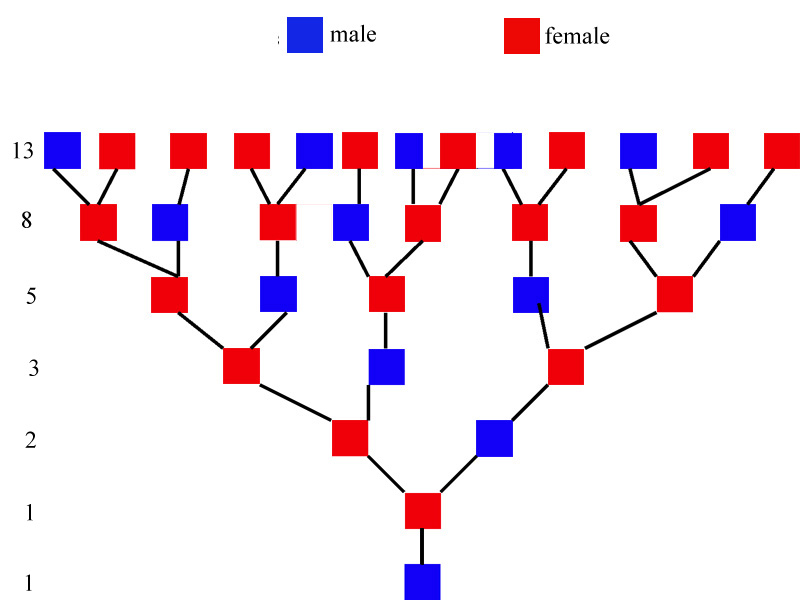| The
diagram to the right shows the ancestry tree of a drone
for 7 generations and demonstrates the Fibonacci series.
Each drone has one parent, each worker has two. A similar diagram can be constructed for a worker bee. |
 |
Bees and Fibonacci
Leonardo Fibonacci (1170-1250) was an Italian mathematician. Famed for introducing the decimal number system into Europe, he has given his name to the sequence of numbers: 0, 1, 1, 2, 3. 5, 8, 13, 21, 34....... where each number is the sum of the two previous numbers in the sequence. Fibonacci invented the series when investigating a problem about the growth of a population of rabbits. Whilst the model was not particularly realistic, it was the first of its kind. Rabbits are not the only biological example displaying the Fibonacci series; plants show a variety of features showing the sequence, for example the number of flower petals on the majority of plants comes from the series. Bees can also be shown to have Fibonacci numbers in their family history. Within a colony of bees, only the queen produces eggs. If these eggs are fertilised then female, worker bees are produced. Male bees (drones), are produced by parthenogenesis, that is, from unfertilised eggs. Female bees therefore have two parents, drones in contrast, have just one parent. The ancestry of a drone bee and a worker bee is shown below. |
| Number of: | Drone | Worker |
| parents | 1 | 2 |
| grandparents | 2 | 3 |
| great grandparents | 3 | 5 |
| great great grandparents | 5 | 8 |
| great great great grandparents | 8 | 13 |
| great great great great grandparents | 13 | 21 |
| great great great great great grandparents | 21 | 34 |
| The
diagram to the right shows the ancestry tree of a drone
for 7 generations and demonstrates the Fibonacci series.
Each drone has one parent, each worker has two. A similar diagram can be constructed for a worker bee. |
 |
If accessed directly, this page should be viewed as part of the series starting here.
Micscape Magazine September 1998.
WIDTH=1